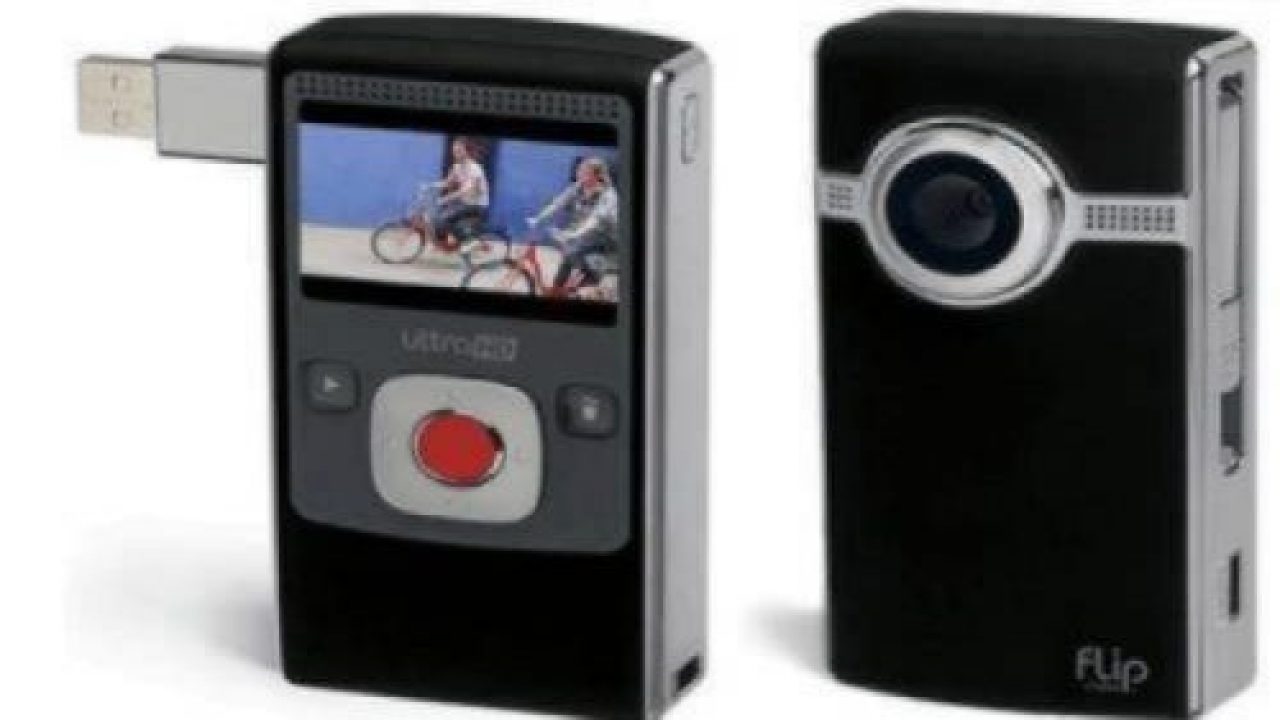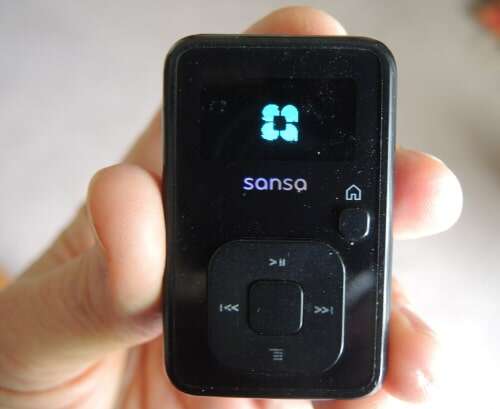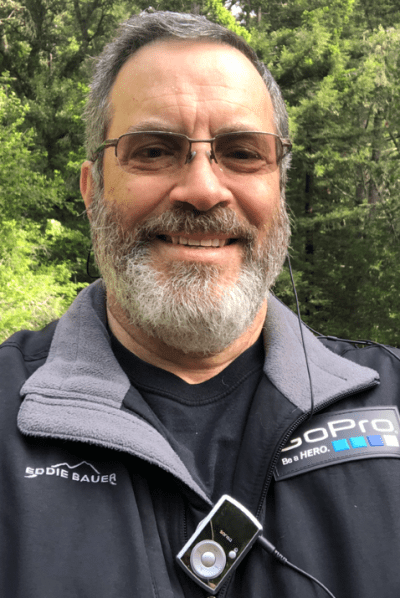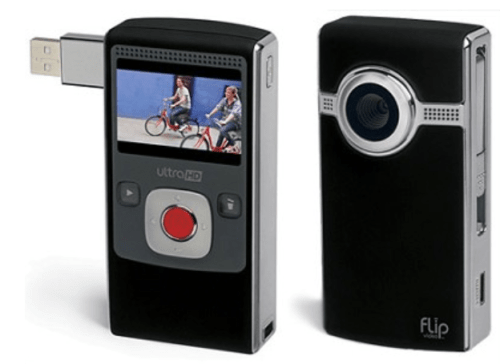Celebrating the Engineer: Bill Thanos
Article By : Rick Merritt

Engineer Bill Thanos helped many find a path to digital music riding the SanDisk Sansa Clip.
SAN JOSE, Calif. — Rummaging through my desk drawer of retired gadgets recently, I came across my SanDisk Sansa Clip. It was my favorite product from a golden age of digital consumer electronics, and it got this passionate music fan through a rough transition from physical CDs on my bookshelf to intangible files on the Internet.
A fraction of the size and weight of my Sony Walkman, the Sansa Clip held an astonishingly large library of music. I could fasten it like a stumpy black clothespin to my t-shirt or shorts, plug in my headphones and take it out for a jog or bike ride, the times I most love listening to music.
As memories flooded back, I decided to seek out and thank the engineer who led the design team. Without too much trouble, I found Bill Thanos who not only led the Sansa Clip team but also worked on the Flip video handset, the Plastic Logic e-reader and the GoPro Hero camera. We talked for an hour about a bygone era of experiments in portable electronics that withered in the shadow of the Apple iPhone.
“The Clip was the product I was most proud of. It was clear it had some staying power — after I moved on to another job, I kept using it,” said Thanos, now director of engineering at security specialist Symantec.

EE Times marked its 20th Anniversary (in 1992) with a special edition that put the focus on our readers — the logo you see here was designed for that issue. We’ve been celebrating the efforts and the lives of engineers continuously for nearly 50 years, but it’s always a fine time to do it formally. Do you know an engineer who made a big difference at a crucial time? Contact us with your candidate for our ongoing series “Celebrating the Engineer.”
The Clip was SanDisk’s biggest success in consumer products and is still sold today. It came out in October 2007, just months before the iPhone. It fit strategically between Apple’s large and expensive iPods and its small but limited Shuffle music player.
Working on novel MP3 players for the flash-memory giant, “we had a good thing going for a while, but SanDisk pulled the plug on [the consumer system design group] because the trend was to put all the music in your iPhone…Apple subsumed lots of products into the iPhone,” he said.
“I graduated this year to an Apple Watch Series 4 and Bluetooth earplugs, and it’s even better because you don’t have a headphone cable slapping you on the back,” he said.
“The thing that’s sad is I have lots of beautiful watches I got as gifts, but they don’t track my steps and heart rate. Once again, Apple has replaced separate gadgets we use and wear. I love Apple products. I never worked for them, but I have some resentment from time to time for needing to change jobs because of them,” he said with a laugh.
A few years earlier, the Flip video handset had a similar fate. It was “the only game in town for standard-definition video” in a portable, but smartphone makers such as “Apple figured out how to squeeze video into the iPhone.”
After he left SanDisk, Thanos headed up hardware engineering at startup Plastic Logic that aimed to sell an e-reader based on a proprietary e-ink display. It floundered in part due to troubles with the display, and in part because e-readers became an app for tablets like the iPad.
Today, “there is no money for [consumer] hardware startups. It’s all software. Investors want the next Google that can scale up on a small investment. Amazon, Apple, and Google have the big pockets and software ecosystems to give hardware value,” Thanos said.

I still have two old Clips
in my desk drawer. (Image: EE Times)
Despite the changing times, Thanos remains at heart an optimist and looks back fondly on his days in consumer electronics. “Innovation in R&D comes when you are having fun…the more fun you are having the better product you will make,” he said.
Making an MP3 player sing
In its day, the Sansa Clip was a big win for the 25-person team behind it. They packed the electronics of an MP3 player into the equivalent of a big matchbox and loaded it up with a rich set of pretty robust digital audio services given online music was still in its infancy at that time.
When Thanos took over the project, “we were using an AMS controller for $10, but we thought we could make an SoC for $4,” he said. The so-called Orpheus ASIC “was a big development job, and we missed the launch window for a Black Friday…[because] some RAM buffer was defined in two places with different sizes, creating a cache coherency problem not solvable with firmware,” he recalled.
The 10-person ASIC team in India quickly respun the RTL, and the Clip was officially released October 9, 2007. It’s SoC included an ARM 926 core, display and SD Card controllers, a NAND storage interface, an ADC to support a mic for voice recordings and an FM tuner. “We crammed so much stuff into that little chip,” he said
The tiny board was jam-packed, too. The Clip was basically a vehicle to sell NAND, and SanDisk could cram 16 of the dice on one side of a board the size of an SD Card. On the flip side, the team put the Orpheus ASIC in a single package with an AMS DAC/PMIC and a DRAM die.
SanDisk got good customer feedback on an OLED display it used in a prior product, one of the first USB sticks with an embedded MP3 player. Thanos decided to adopt the display for the Clip.
“Once we got an idea how small we could make the board, the industrial design folks put a nice enclosure around it — the idea was to take on the Shuffle, but have a display and more controls,” Thanos said, referring to the display-less Apple product.
In one meeting, Thanos suggested calling it the Clip as a reference to music clips, and the name stuck. “People said you should be in marketing,” he recalled with a laugh.
For software, the team partnered with Audible, Rhapsody and Microsoft, integrating code for their digital rights management schemes. Later, users on the Clip’s online forum called for support of an open-source lossless compression decoder they were installing themselves on hacked Clips.
Thanos, an avid reader of the forum, decided to integrate that software, too. The team even created a graphic equalizer for the monochrome display. By 2008, SanDisk was selling versions with a slot for a 32-GByte SD card, a hefty amount of memory for the time.
A personal aside here: At that time, I struggled to find the music I loved on Rhapsody. Much of it wasn’t there because many artists weren’t accepting the pennies-on-the-dollar digital services pay. But I discovered some new artists and amassed a significant library, one I unfortunately had to leave behind when I eventually transitioned to an iPhone and its ecosystem.
In general, users’ gripes with the Clip were few and mainly about the mechanicals. My big problems were the headphone jacks would short out after a year or two of jogging and biking and once the spring on the clip broke.
“The headphone jacks were notoriously unreliable. The other problem we had was with one wire from the lithium-polymer battery that would break off — some users cracked into the case and re-soldered it and put on the forum how to make the repair,” Thanos said.
Eventually, SanDisk laid off the team and hired an ODM to design future models. The originals were made by Beautiful Engineer, a contract manufacturer in China. “We called them BE for short,” he said, noting he helped manage a design team SanDisk acquired in Korea that design Clips for the China market.

Bill Thanos
Overall, “I was there three years and had fun — you could listen to music as part of your job,” he said.
At SanDisk, Thanos’ boss was Kevin Conley, now chief executive of Everspin Technologies, a pioneer of MRAM chips. The two met at Kalok, a hard disk startup where Thanos was designing a 2.5-inch drive that was just an inch high to compete with the fat 3.5-inchers of the day.
Later, “going into semiconductor memory seemed like the next big thing,” said Conley who was put in charge of SanDisk’s device group that created the Clip.
“What was cool is a lot of companies were making digital music players, but because we were a flash company we took a memory-centric approach putting many, many more songs in people’s hands. That’s where the idea of the Clip came from,” Conley said.
“I reached out to Bill because these were a whole-experience product, and we needed someone capable and systems-oriented…Bill’s an incredibly creative guy,” he said.
“The mechanical team had the idea of a clip and the form factor centered around it. We also liked making the UI as simple as possible while supporting as many features as possible,” he said, recalling time he spent with Real Networks and Napster, the bleeding edge service providers of the day.
The Clip was a big success for SanDisk. “At its height, we were selling more units than the Apple Shuffle, more than Creative Labs,” another early leader in digital audio, he said, calling the Clip “the best experience of his career.”
In 2010, the year after he left SanDisk, the Clip still appeared in a review of the top ten MP3 devices. “It was heartwarming to see,” Conley said.
Startups pre- and post-Clip
When the Clip team was laid off, Thanos joined a Silicon Valley startup building an e-reader. After Amazon debuted the Kindle to rave reviews, to differentiate itself it partnered with Plastic Logic, a U.K. company with a novel transistor-on-plastic display technology.
The tech promised thin e-readers, easily readable in sunlight. Ironically, when exposed to the heat of intense sunlight the cells emitted gas, creating black pixels. Before long it was clear “we missed the market window and investors pulled the plug,” Thanos said.
Thanos got his early experience in a consumer startup with Pure Digital which initially made a disposable point-and-shot camera. It competed with popular reusable models that Kodak and other film giants sold.
“I came in to build their camera hardware team — the original product had been outsourced. We worked with Zoran’s VGA image processing chip, well before high-def days. The video was OK but not great,” he said.
The idea was a retail shop would give users a DVD of their content in return for cash and the camera which they recycled. But “people would keep the camera because it was fun to use — that’s when the idea of a camera with a retractable USB arm came up,” he said.

Briefly, the Flip Video camera was a consumer phenomenon in the early days of Web video. Cisco scooped it up for $590 million in 2009, but once smartphones supported video the network giant just as quickly canned the product in 2011.
Having experience building a hot consumer camera netted Thanos a job at GoPro where he led the team that designed the SoC for the Hero 6 and 7. The cameras embodied a concept he had already tinkered with.
“In the early days of the Flip, I duck-taped one to the handlebars of my son’s small mountain bike, we pushed it off a cliff and watched it go — we got a big kick seeing it crash,” he recalled.
Looking back at his experiences with consumer-electronics startups, “I have a lot of warm feelings thinking of those days. They remind me of my early days working on hard disk drives where there was maybe 100 storage startups in the Valley at one point, but it all boiled down to two companies today,” he said.
Once a year, his colleagues at the former hard disk maker Quantum take a bike ride and reminisce about “the Wild West of storage,” he added.
Today at Symantec Thanos is “a hardware guy running a software team.” In a security company, “you are doing something good, protecting people from hackers — and it’s fun to see the hacks we are blocking, how people try to hack devices to work on bitcoin or to put malware in device. I’m still having fun,” he said.
Engineering is in Bill Thanos’ genes. “My Dad just retired this year at 84. He was working from home,” Thanos said.
Over his career, the elder Thanos had a small hand in work that went to the moon on the Apollo program, he developed a programmable analog filter, started a company, built spectrum analyzers, then helped start DSP board maker Pentek, writing their technical manuals at the end of his career.
“I worked as an EE in Dad’s company’s stockroom as a drafting technician in summers when I came home from RPI for funny money,” Thanos recalled from his time at Rensselaer Polytechnic Institute. “My grandfather on my Mom’s side worked for GE, so I guess it was inevitable I would be EE,” he said.
Oh, and as Steve Jobs used to say, one more thing:
Thanks Bill, for the Clip, the Flip, the Hero 6 and 7, your work keeping the cybersphere safe from hackers and an unexpectedly great conversation. May you keep engineering cool stuff for a long time — and have fun doing it.
Subscribe to Newsletter
Test Qr code text s ss


